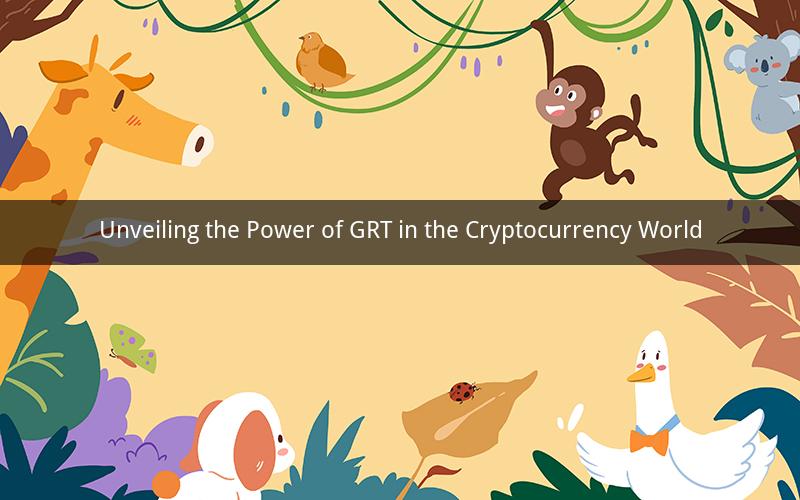
In the rapidly evolving world of cryptocurrencies, a new and exciting token has emerged - GRT. GRT, or The Graph's native token, has sparked significant interest among investors and enthusiasts alike. This article delves into what GRT is, its significance in the cryptocurrency space, and its potential future developments.
What is GRT?
GRT stands for Graph Token, and it is the native token of The Graph, a decentralized protocol for indexing and querying blockchain data. The Graph enables developers to build and host their own subgraphs, which are filtered and structured subsets of blockchain data. These subgraphs can then be queried using GraphQL, a powerful and flexible query language.
The significance of GRT lies in its ability to facilitate the efficient indexing and querying of blockchain data. This is crucial for the development of decentralized applications (dApps) that rely on real-time, accurate, and scalable data. By incentivizing network participants to contribute to the indexing and querying process, GRT plays a vital role in ensuring the smooth functioning of The Graph protocol.
How does GRT work?
The Graph protocol operates on a decentralized network of nodes, which are responsible for indexing and querying blockchain data. These nodes are rewarded with GRT tokens for their contributions. The GRT token serves as a medium of exchange and a means of incentivizing participation in the network.
When a developer creates a subgraph, they must pay GRT tokens to deploy it on the network. This fee incentivizes nodes to host the subgraph and provides a financial incentive for them to maintain high-quality indexing and querying services. Additionally, GRT tokens are used to reward nodes for their contributions to the network.
What are the benefits of GRT?
There are several benefits to using GRT in the cryptocurrency world:
1. Scalability: GRT enables the efficient indexing and querying of blockchain data, which is crucial for the scalability of dApps. By reducing the time and resources required to access blockchain data, GRT helps to ensure that dApps can operate at a high level of performance.
2. Decentralization: The Graph protocol is built on a decentralized network, which ensures that the indexing and querying process is not controlled by a single entity. This decentralization enhances the security and reliability of the network.
3. Flexibility: The Graph protocol supports a wide range of blockchain platforms, including Ethereum, Binance Smart Chain, and Polkadot. This flexibility allows developers to build dApps that can leverage data from multiple blockchains.
4. Incentivization: GRT tokens incentivize network participants to contribute to the indexing and querying process, ensuring high-quality services and a well-maintained network.
What are the potential future developments for GRT?
The Graph protocol and GRT token have the potential for significant growth in the future. Here are some potential developments to watch for:
1. Increased adoption: As more developers discover the benefits of The Graph protocol, the demand for GRT tokens is likely to increase. This could drive the price of GRT higher.
2. Expansion of supported blockchains: The Graph protocol has already supported several popular blockchain platforms. As more blockchains join the network, the value of GRT could increase.
3. Improved indexing and querying capabilities: Ongoing development of The Graph protocol may lead to improved indexing and querying capabilities, further enhancing the value of GRT.
4. Integration with other protocols: The Graph protocol has the potential to integrate with other popular protocols, creating new use cases for GRT and driving its adoption.
5. Regulatory developments: As the cryptocurrency market continues to evolve, regulatory developments could impact the adoption and value of GRT.
Frequently Asked Questions
1. Q: What is The Graph protocol?
A: The Graph protocol is a decentralized protocol for indexing and querying blockchain data. It enables developers to build and host their own subgraphs, which are filtered and structured subsets of blockchain data.
2. Q: How does GRT differ from other cryptocurrency tokens?
A: GRT is a unique token that serves as a medium of exchange and a means of incentivizing participation in The Graph protocol. It is not a utility token or a security token, but rather a governance token.
3. Q: Can I mine GRT tokens?
A: No, GRT tokens are not mineable. They are distributed through a decentralized network of nodes that contribute to the indexing and querying process.
4. Q: How does GRT impact the scalability of dApps?
A: GRT enables the efficient indexing and querying of blockchain data, which is crucial for the scalability of dApps. By reducing the time and resources required to access blockchain data, GRT helps to ensure that dApps can operate at a high level of performance.
5. Q: What is the future of GRT in the cryptocurrency world?
A: The future of GRT is promising, with potential growth driven by increased adoption, expansion of supported blockchains, improved indexing and querying capabilities, integration with other protocols, and regulatory developments.